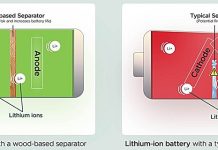
In a push towards sustainability, scientists are exploring new ways to harvest energy from waste heat.
While wind and solar power get most of the attention, waste heat remains a largely untapped energy source.
Using special materials, waste heat from industrial processes can be converted into electricity, making these processes more efficient.
However, capturing “low-grade” waste heat (below 200°C) has been challenging.
Most materials that can convert heat to electricity at these temperatures are either toxic, too expensive, or not flexible enough for applications like wearable electronics.
A team of researchers from Okayama University in Japan, led by Professor Hiroo Suzuki, is addressing this challenge using carbon nanotube (CNT) yarns.
Their study, published on in the journal Small Methods, focuses on creating high-performance n-type CNT yarns (yarns with an excess of electrons) to work alongside existing p-type CNT yarns (yarns with an excess of positive charge carriers).
“CNT yarns are perfect for practical applications because their yarn-like structure allows for flexible devices, like fabric-based modules,” explains Dr. Suzuki. “However, while we have p-type CNT yarns with high performance, we lacked similar n-type CNT yarns, which are crucial for efficient devices.”
To solve this, the team developed a new method to produce n-type CNT yarns. They used a stable dopant called N-DMBI to add impurities to the yarns, enhancing their properties. The researchers first spun the CNT yarns using a dry spinning technique and then subjected them to “Joule annealing,” where an electric current heats the material to increase its crystallinity and improve performance.
Finding the right solvent for doping was key. After testing ten different solvents, they found that o-dichlorobenzene worked best at low temperatures, resulting in CNT yarns with excellent thermoelectric properties.
The team reported that these n-type CNT yarns achieved high thermoelectric power factors at temperatures between 30 and 200°C. They tested the material in a prototype thermoelectric generator, which successfully produced electricity at just 55°C with a small temperature difference of 20°C.
“Generating power at low temperatures with small temperature differences is crucial for developing thermoelectric modules that can use various heat sources, like waste heat from factories, vehicles, and even body heat,” says Dr. Suzuki.
“This research can help solve energy problems by making better use of wasted energy and powering devices like flexible health sensors.”
This study opens the door to more efficient energy harvesting from waste heat, offering a promising solution for sustainable energy use and contributing to energy savings.
Source: KSR.



